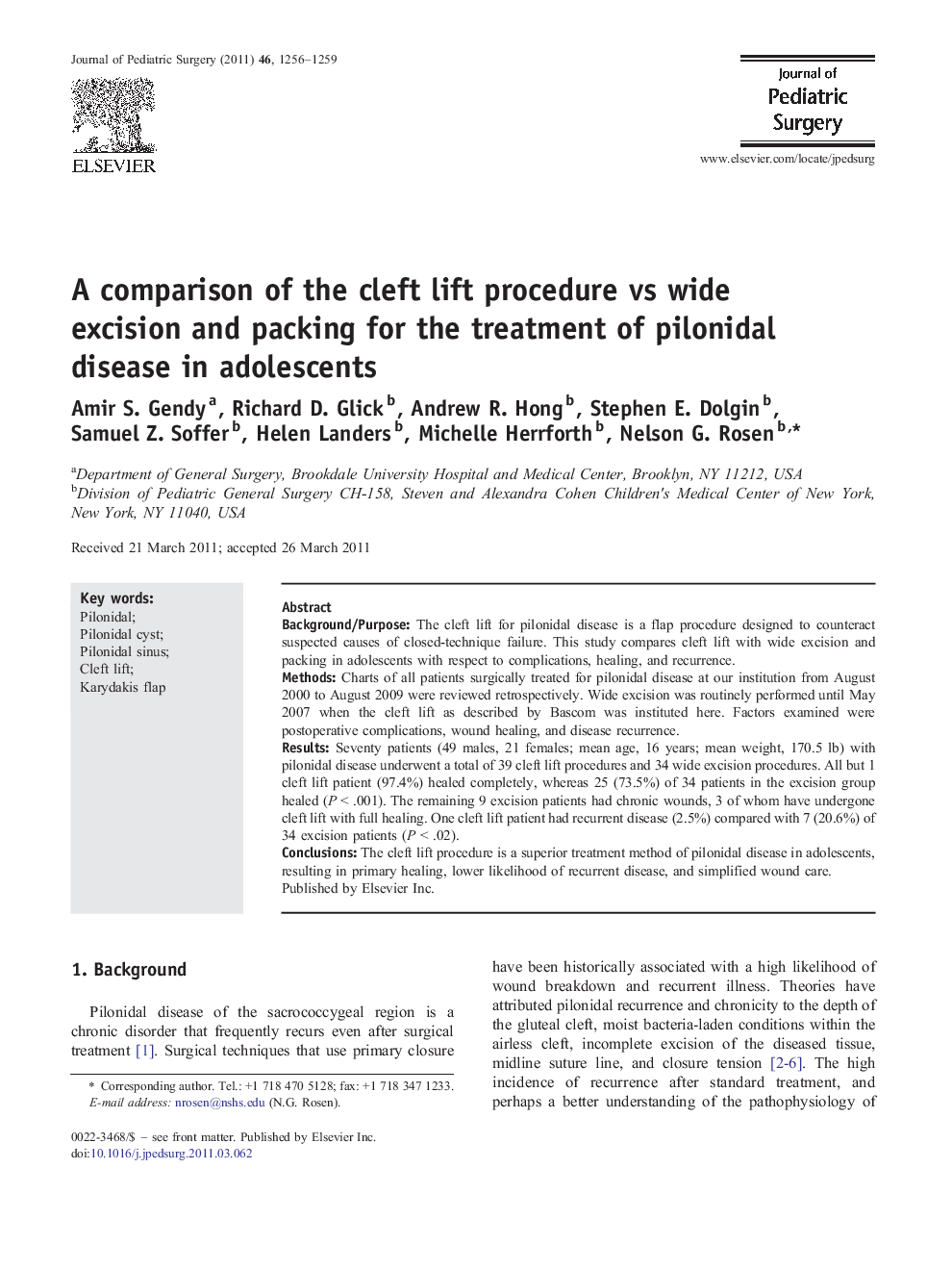| Article ID | Journal | Published Year | Pages | File Type |
|---|---|---|---|---|
| 4157106 | Journal of Pediatric Surgery | 2011 | 4 Pages |
Background/PurposeThe cleft lift for pilonidal disease is a flap procedure designed to counteract suspected causes of closed-technique failure. This study compares cleft lift with wide excision and packing in adolescents with respect to complications, healing, and recurrence.MethodsCharts of all patients surgically treated for pilonidal disease at our institution from August 2000 to August 2009 were reviewed retrospectively. Wide excision was routinely performed until May 2007 when the cleft lift as described by Bascom was instituted here. Factors examined were postoperative complications, wound healing, and disease recurrence.ResultsSeventy patients (49 males, 21 females; mean age, 16 years; mean weight, 170.5 lb) with pilonidal disease underwent a total of 39 cleft lift procedures and 34 wide excision procedures. All but 1 cleft lift patient (97.4%) healed completely, whereas 25 (73.5%) of 34 patients in the excision group healed (P < .001). The remaining 9 excision patients had chronic wounds, 3 of whom have undergone cleft lift with full healing. One cleft lift patient had recurrent disease (2.5%) compared with 7 (20.6%) of 34 excision patients (P < .02).ConclusionsThe cleft lift procedure is a superior treatment method of pilonidal disease in adolescents, resulting in primary healing, lower likelihood of recurrent disease, and simplified wound care.
